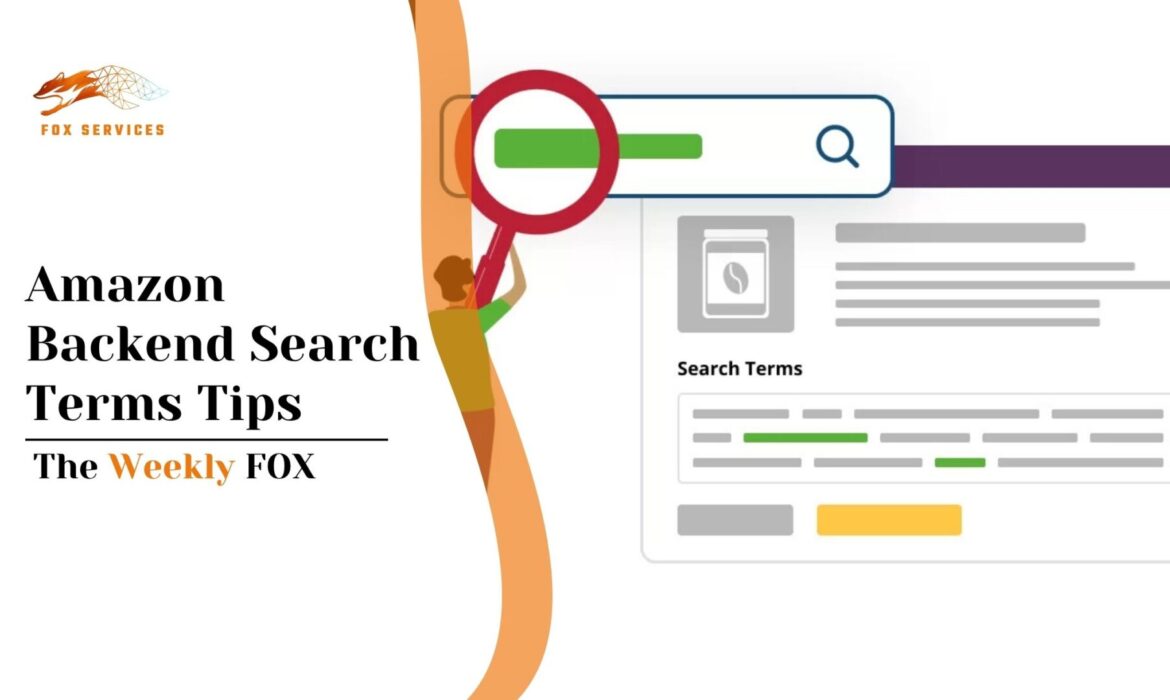Amazon Backend Search Terms Tips: Maximize Hidden Keywords for Higher Rankings
Most sellers know how important product titles, bullet points, and images are when optimizing an Amazon listing. But what many overlook is one of the most powerful ranking factors hidden deep within your Seller Central dashboard: backend search terms.
If used correctly, backend keywords can help you outrank competitors, boost visibility, and attract the right buyers—without cluttering your product title or bullet points.
In this post, you’ll learn expert-level Amazon backend search terms tips to help you optimize your listings for maximum organic reach in 2025.

Amazon Backend Search Terms Tips
What Are Amazon Backend Search Terms?
Amazon backend search terms are hidden keywords added in your listing’s backend under “Search Terms” in the Keywords tab.
These aren’t visible to customers, but they tell Amazon what your listing is about. Think of them as your secret SEO weapon—used to target extra keywords without overstuffing your visible content.
Why Backend Keywords Matter for SEO
Amazon’s A9 algorithm indexes backend search terms when determining where your product ranks for specific customer queries. Properly using this section can help you:
- Increase keyword coverage
- Improve organic ranking
- Appear in more search results
- Capture long-tail, niche traffic
👉 Need a full breakdown on Amazon SEO? Explore our guide on How to Optimize Amazon Listings for SEO for an in-depth strategy.
7 Amazon Backend Search Terms Tips You Can Use Today
1. Use All 250 Characters (But Don’t Repeat)
Amazon allows 250 characters across all backend fields combined. Use every character wisely—but don’t repeat any words already used in your title, bullets, or description.
Amazon ignores duplicate keywords, so repeating them wastes space.
2. Avoid Commas, Stop Words & Punctuation
No need for commas, periods, or filler words like “the,” “a,” or “for.” Just enter a list of keywords separated by spaces.
✅ Example:eco friendly yoga mat non slip thick large for women
🚫 Incorrect:eco-friendly, yoga mat, non-slip, thick, large for women
3. Include Synonyms & Regional Variants
Think like your customer. If you’re selling a trash can, someone in the UK might search for “bin.” Include synonyms, spelling variations, and slang.
💡 Pro tip: Add Spanish keywords if you sell in the U.S., where many customers search in Spanish.
4. Add Long-Tail Keywords
Backend fields are perfect for long-tail keywords that may be too clunky for your title or bullets.
Example:spill proof stainless steel toddler water bottle with straw
Want more insights on long-tail strategy? Read our post on Long Tail Keywords for Amazon Listings.
5. Don’t Include Brand Names or Competitors
It might be tempting, but using competitor brand names is against Amazon’s policies and could get your listing suppressed.
Stick to generic keywords related to features, use cases, or benefits.
6. Use Misspellings (Smartly)
Amazon’s A9 engine does autocorrect, but adding commonly misspelled variations (e.g., “mattress” vs. “matress”) may still help. Use this sparingly and test performance.
7. Audit & Refresh Every Month
Amazon SEO is not set-and-forget. Trends change, so use tools like Helium 10, Jungle Scout, or SellerApp to monitor which keywords are performing—and update your backend terms accordingly.
🔗 For an advanced backend SEO breakdown, check Helium 10’s guide to Amazon backend keywords.
Bonus Tip: Use Keyword Research Tools Before You Write
Reverse ASIN tools like Helium 10’s Cerebro help identify which keywords your top competitors rank for—making it easy to choose high-potential backend keywords.
Combine this data with Google Keyword Planner for added insights.
Common Mistakes to Avoid
- ❌ Repeating keywords already used elsewhere
- ❌ Using punctuation or capital letters
- ❌ Adding irrelevant or misleading terms
- ❌ Exceeding the 250-character limit
- ❌ Leaving backend fields blank
Backend fields are valuable real estate. Don’t waste them!
Your backend search terms are your hidden SEO powerhouse on Amazon. When optimized correctly, they can help increase impressions, improve search rankings, and attract more qualified buyers.
Use these tips consistently to ensure your product listings stay ahead of the competition in 2025.
📈 Want Expert Help Optimizing Your Amazon Backend Search Terms?
Let’s unlock hidden growth opportunities in your listing together.
👉 Book your FREE 1-on-1 Amazon SEO Audit Call
In just 20 minutes, we’ll analyze your current backend strategy, reveal missed keyword opportunities, and build a plan to boost your rankings.
Claim your free session now—limited slots available every week!







